
By Crispin Rovere
“Moscow apparently believes that the United States is unwilling to respond to Russian employment of tactical nuclear weapons with strategic nuclear weapons.”
This sentence defines the 2018 U.S. Nuclear Posture Review.
Instability exists in the nuclear relationship between the United States and Russia. NATO now extends to the Russian border, a mere 150 kilometers from St. Petersburg. For Moscow, this means a hostile military alliance is situated on territory through which at least three devastating invasions of Russia have taken place – including the Nazi war machine that left over 20 million Russians dead.
Americans, who share no point of reference, are often vexed by Russian hostility towards NATO. They know NATO is a defensive alliance with no interest in attacking Russia. Yet Washington’s failure to see legitimacy in Russia’s lived experience means that Moscow’s actions are reflexively interpreted as expansionism rather than fear.
Equally, U.S. allies have their own experience of Soviet oppression. Democracies such as Lithuania, Latvia, and Estonia deserve peace and security. This creates a dilemma for the United States. As NATO members, the Article V commitment extends to the Baltic states, including the nuclear commitment.
Yet when it comes to Russia this commitment is so ridiculous that it’s difficult not to laugh. Washington was able to live with a subjugated Baltic throughout the Cold War. Notions of U.S. presidents inviting nuclear armageddon over Estonia’s independence is pure fantasy, regardless of the NATO Charter or quotes from a summit.
The NPR clambers to square this circle – enter low-yield nuclear weapons, the Intermediate-range Nuclear Forces Treaty, and Submarine-launched Cruise Missiles.
The biggest capability shift in the 2018 NPR is the move to develop low-yield nuclear weapons in the form of a new SLCM:
“[T]he United States will enhance the flexibility and range of its tailored deterrence options. To be clear, this is not intended to, nor does it enable, “nuclear war-fighting.” Expanding flexible U.S. nuclear options now, to include low-yield options, is important for the preservation of credible deterrence against regional aggression. It will raise the nuclear threshold and help ensure that potential adversaries perceive no possible advantage in limited nuclear escalation, making nuclear employment less likely.”
This is amusing because the purpose of low-yield nuclear weapons is to facilitate nuclear war-fighting. By definition, low-yield nuclear weapons reduce the qualitative distinction between conventional and nuclear weapons, thereby lowering the threshold to nuclear war.
And yet despite the egregious lies, the above statement contains an important subtext. The United States is conveying that the only conceivable scenario in which nuclear war could occur is if Russia initiates it; plausible if Russia believed that limited nuclear use sought only minor political objectives.
One scenario where this would hold true is limited nuclear use by Russia on its own territory, say to deter NATO forces from advancing into Russia during a conflict. For example, suppose Russian forces had invaded the Baltic states but were subsequently ejected. Russia could detonate a low-yield nuclear weapon on its own territory to demonstrate resolve and terminate hostilities with an honourable peace. Here the United States would have achieved its primary objective (expelling Russian forces from allied territory), and would therefore accept that punitive incursions into Russia would not be equal to the cost.
Of course, this is not what the United States fears. Washington’s concern is that Russia might seize the Baltic states and then detonate a low-yield nuclear weapon early to deter NATO from rallying to liberate its allies.
The plausibility of this can be debated, but the NPR’s response is certainly flawed. The U.S. knows that stationing nuclear weapons on Baltic territory would be Russia’s Cuban missile crisis, and therefore alternative means of nuclear assurance is necessary. The answer, according to the NPR, is a new low-yield SLCM to provide proportional response options to Russian nuclear escalation, without having these arrayed along Russia’s border. The NPR implies this weapon would deter Russian aggression and serve as a bargaining chip for bringing Moscow back into compliance with the INF Treaty.
Both these assessments are wrong. The correct response to a limited nuclear demonstration would be to ignore it – to send in conventional forces anyway and dare Russia to act, “go ahead, use low-yield nuclear weapons on our troops. See what happens.” Instantly the dilemma is then reversed.
What the NPR fails to grasp is that when combined with a strong conventional presence, America’s reliance on strategic escalation strengthens deterrence, while the deployment of low-yield SLCMs weakens it. This is because the existence of American low-yield options means Russia would anticipate proportional responses to limited nuclear use, expecting nuclear conflict to be contained at a low level.

Given Russia’s enduring superiority in non-strategic nuclear weapons, and comparative weakness in conventional forces, escalation to limited nuclear war-fighting strongly benefits Russia. In short, Russia would be comfortable with a low-yield nuclear war because they would win it. Conversely, understanding that America had few alternatives to strategic nuclear escalation would give Russia pause. This failure to understand how proportionality can sometimes undermine stability is an enduring weakness in American nuclear strategy.
Take poker as an example. Say you have equity in a hand and considering a bet – you’d like a call but would have to fold to a raise. You’re less likely to bet if your opponent’s stack size requires them to go all-in or fold than when they had the chips to toss in a call. When it comes to the spectrum of nuclear capabilities, America is better off playing the short-stack.
As for the INF Treaty – it is obsolete. It was signed between two superpowers when the battlelines were across central Europe, and then mostly as a sign of goodwill. In a multi-polar world where missiles of all ranges are widely proliferated, INF is no longer valid. It is unrealistic to expect compliance with a bilateral treaty that fails to serve the interests of one party. Rather than holding urgent areas of arms control hostage (such as addressing non-strategic nuclear weapons directly), it would be best if both parties terminated the INF Treaty and moved on.
Regardless of the flaws, America’s 2018 NPR is symptomatic of an unstable strategic dynamic in U.S.-Russia relations. What’s necessary isn’t new low-yield nuclear weapons, but candid dialogue about the future of the Baltic region and Russia’s relationship with NATO. Instead there is perennial misunderstanding and chronic lack of trust on both sides – dangerous ingredients when deploying nuclear arms.
Crispin Rovere is a member of the Australian Labor Party and previous convenor of the ACT ALP International Affairs Policy Committee. Formerly he was a PhD candidate at the ANU’s Strategic and Defence Studies Centre (SDSC) and previously worked in Secretariat of the Asia-Pacific Leadership Network for Nuclear Non-Proliferation and Disarmament, and published on nuclear policy.

Crispin is the author of The Trump Phenomenon: How One Man Conquered America. Follow him on Twitter: @crispinrovere.
All views and opinions expressed in this article are those of the author, and do not necessarily reflect the opinions or positions of The Defense Post.
The Defense Post aims to publish a wide range of high-quality opinion and analysis from a diverse array of people – do you want to send us yours? Click here to submit an Op-Ed.

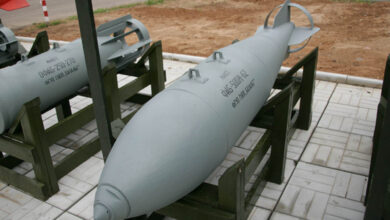
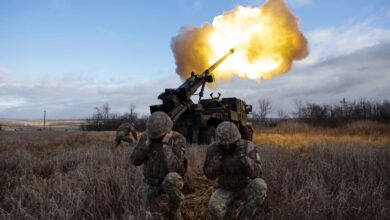


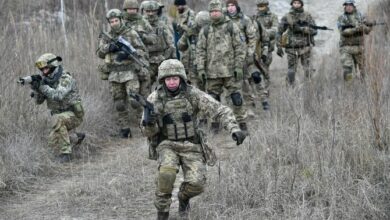
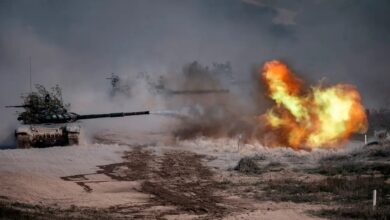

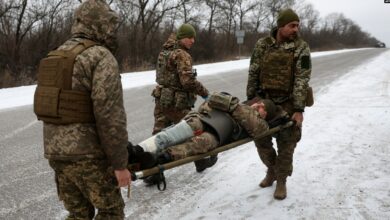


One Comment